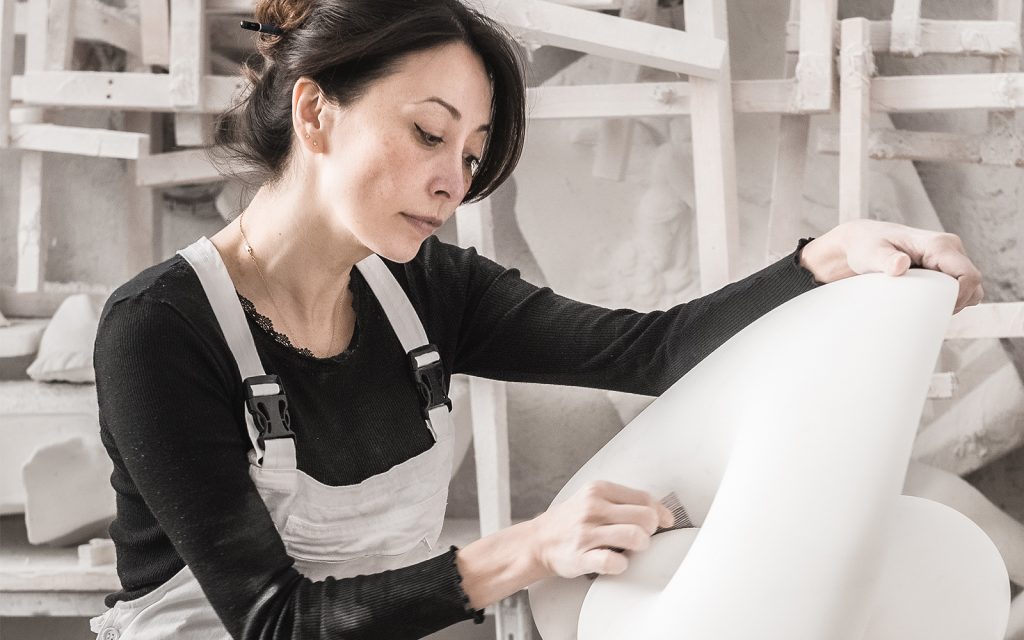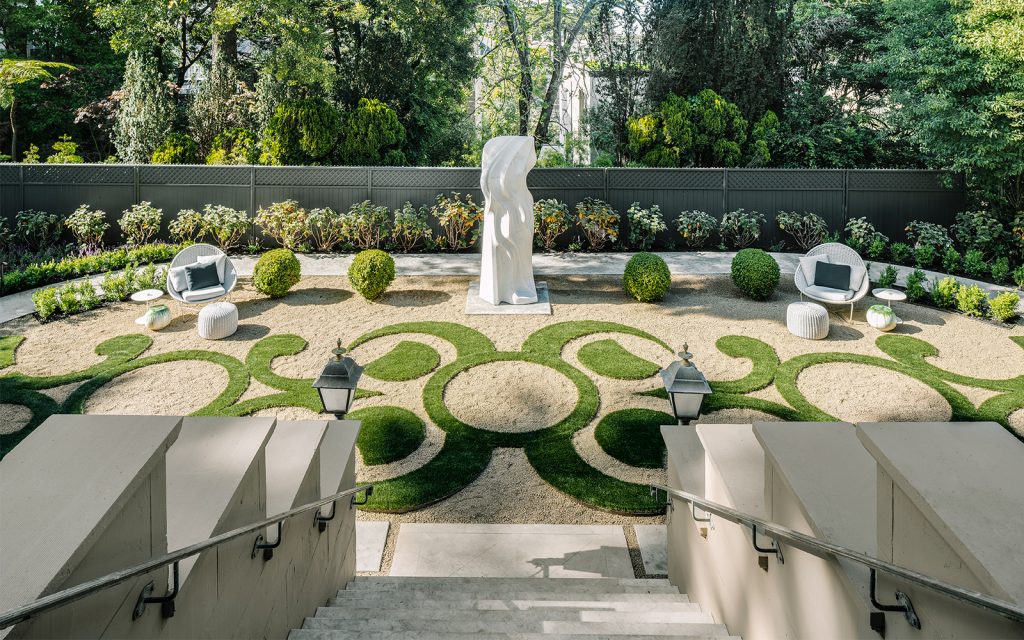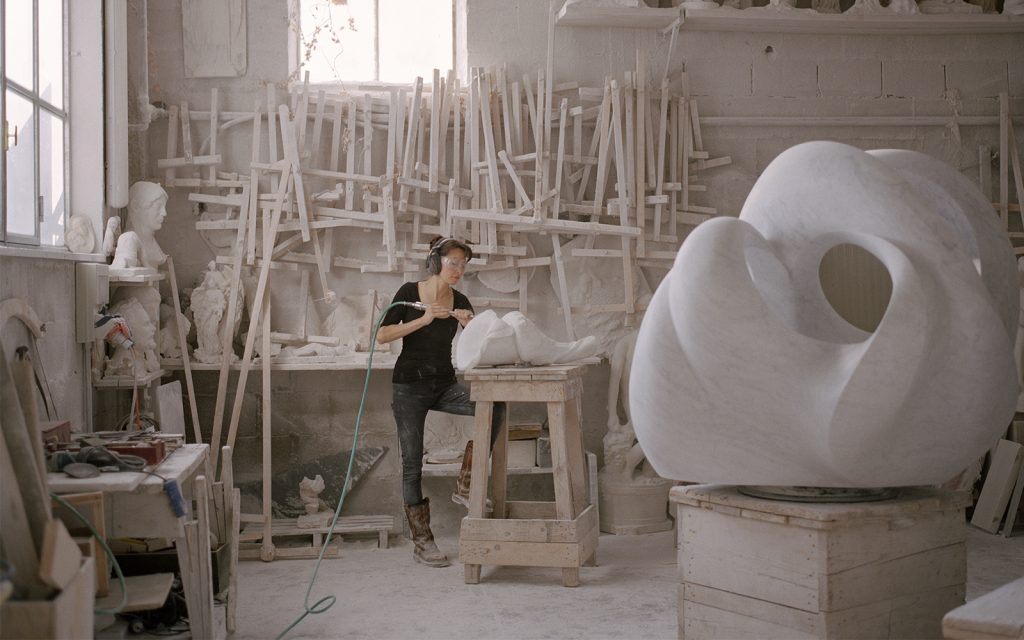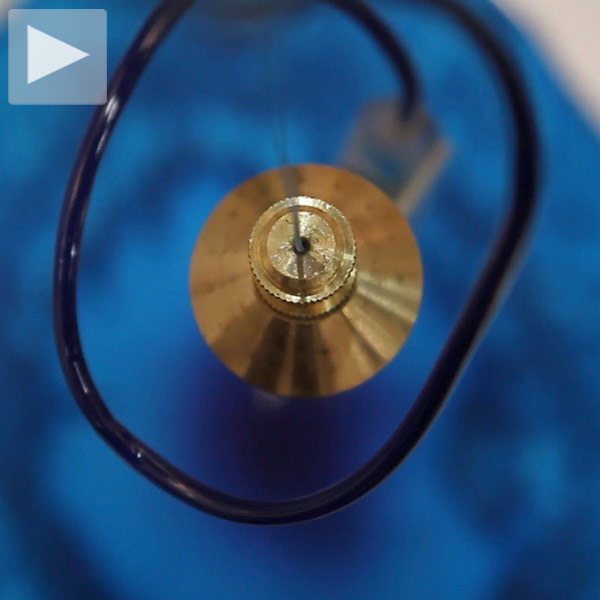Sculptor Yoko Kubrick’s Mythic Marble Works
Chiseled from Carrara or Calacatta marble, works that highlight attributes from Greek mythology

Yoko Kubrick retells extravagant stories from myths and lore without relying on realism. Her abstract marble sculptures impress and nearly intimidate. They’re otherworldly in a way that leaves viewers wondering just how they were made. Though based in San Francisco, Kubrick has worked in Tuscany since she became enamored with the town Pietrasanta, known for being the source of much of Michelangelo’s marble. There, she handcrafts her work using similarly milky stone, furthering a medium marked by ancient Greek sculptors and Renaissance artists.

“I have a small studio just outside the town center of Pietrasanta,” Kubrick tells CH. “It is a simple little building with high ceilings and large doors that open to let the air and sunshine in. I collect antique sculpting tools and gessos which adorn the walls of the studio. Outside, there is a small garden area where I keep marble blocks. I also work with a commercial studio nearby alongside other sculptors and artisans where we have access to large-scale machinery, forklifts, cranes, saws and tools needed to execute large-scale work.”

“I was first drawn to Tuscany when I read The Agony and Ecstasy of Michelangelo,” she continues. “There is a culture of craftsmanship and reverence for tradition in Tuscany, unlike anything I have ever experienced. It is a place where picture frames, shoes and leather goods are still crafted by hand. Families still make their own wine and olive oil. There is a rhythm in the pace of life and it is enchanting.”

This very rhythm flows through Kubrick’s works. Languid and lavish, her pieces twist and wind as if tasked with chasing each’s own tail for eternity. Kubrick’s 2018 work “Tides“—a 244-pound sculpture chiseled from Carrara and Bardiglio marble—swirls into itself, a sea of clashing waves bound for opposite edges. The three forces comprising each inward wave represent the past, present and future. It can be found on the University of San Francisco’s campus, set before a line of trees.

“Tides” stands as Kubrick’s most obvious reference to the natural world. She approaches it, however, through the lens of Greek mythology. Her 2019 sculpture “Lethe,” which reaches over nine feet high, emphasizes this method. “‘Lethe’ was one of the five rivers of the afterlife in classical Greek mythology. It was said that passing between lives, human souls drank from her waters to erase their memories in preparation for their rebirth,” Kubrick explains in the piece’s description. Though meant to be a depiction of the mythic river, it bears resemblance to a real one, with its vast ripples and synchronized peaks. From afar, it flows like the cloak of one her referenced gods or goddesses.

“This process came quite intuitively for me. I attribute this to my childhood in Guam and Hawaii,” Kubrick tells us of translating myth to marble. “Mythology was a part of everyday life and I could see and feel the stories told through the sculpture. I try to tell stories in the same way. For my sculpture ‘Echo,’ I embodied the trunk of a trumpet which curls into the petal of a Calla Lily without its stamen to symbolize her voice and feeling of longing. For ‘Thalassa,’ I chose flowing feminine waves and the curve of a hip. I think of my sculptures as allegories. They are abstractions of human emotions and universal stories.”

Producing works with such precision requires strength, persistence and remarkable proficiency with each necessary tool. Kubrick attributes her knowledge of the equipment to her upbringing and a naturally heightened sense of touch. “The biography of the sculptor Isamu Noguchi was very inspirational to me,” she tells us. “I can identify with his childhood experiences as a mixed ethnicity Japanese American and his early apprenticeship as an assistant mold making and casting, which is where I also first started. Later I was drawn from bronze to stone sculptures where the tactile feeling of marble further inspired my works.”

Tracing Kubrick’s works from idea to installation emphasizes her use of touch as a guide. In their rawest forms, they appear coarse to the touch—unrefined material yet to be smoothed. When they’re unveiled, produced in stone, each looks starkly different from the draft crafted in her studio; a testament to both the beautifying abilities of the Carrara and Calacatta marbles and her touch.

“Most of my work is sketched out first in clay or gesso. I make several iterations before settling on the final form. I use a different approach depending on the details, form and the medium that I use,” Kubrick says. “For example, I may form in clay first, create a waste mold and then gesso. At each step, the form is further refined using sculpting tools such as rasps and knives. For large-scale work, I work with a team that helps me plan and execute the enlargement in stone.”
“One of my favorite aspects of working in marble is knowing and using the tools,” she continues. “The rasps for example are hand-forged on a wooden burning forge, and each tooth is hand-cut. Sculptors have used these tools since the time of Bernini, Canova and Michelangelo. All finish work is done by hand using rasps, honing stones and sandpapers. The process can take anywhere from a couple of weeks to several months depending on the size and complexity of the sculpture. I feel that sculpture is like choreography. There is a beginning, a middle and an end. I move through the piece until I intuitively know it is done.”
All images courtesy of Yoko Kubrick, hero image by Diego Mayon











